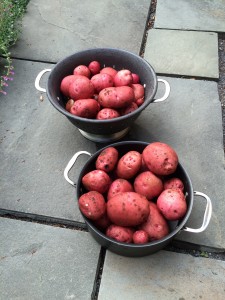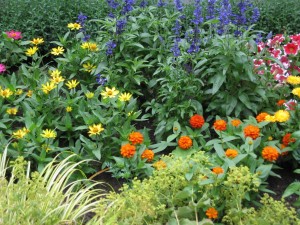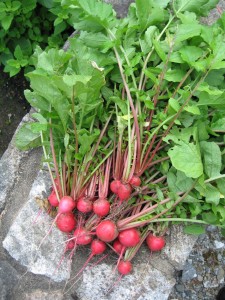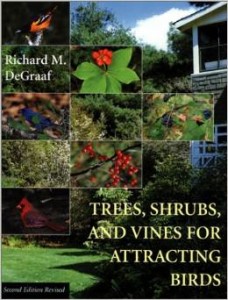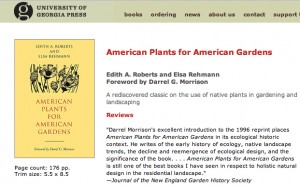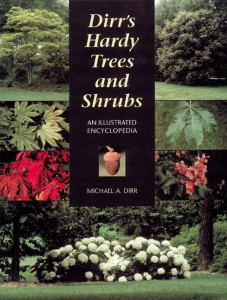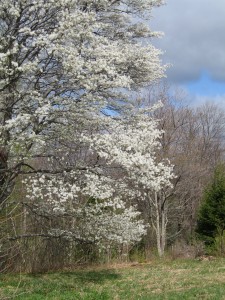Winter/Spring Lectures 2016
March 9, 2016 by admin
Filed under Garden Lectures
Thursday, March 10
Garden Club of Dobbs Ferry monthly meeting
When: 1:00 PM
Where: Mead House, 12 Elm St., Dobbs Ferry NY
For more information phone (914) 479-1414. Please confine calls to normal business hours.
Program: Containers that Won’t Quit
Thank you to the Garden Club of Dobbs Ferry for making this event possible.
Monday, March 14
Redding Garden Club monthly meeting (members and guests only)
When: 1:00 PM
Where: Redding Community Center, 37 Lonetown Rd., Redding, CT
For more information phone (203) 431-0613. Please confine calls to normal business hours.
Program: Shade Revealed: How to Garden Successfully in Low Light (Really!)
Thank you to the Redding Garden Club for making this event possible.
Tuesday, March 22
Master Gardeners of Bergen County and Rutgers Master Gardeners of Essex County
When: 7:30 PM
Where: County Administration Building, One Bergen County Plaza (off Hudson St. next to courthouse), Hackensack, NJ
For more information phone (201) 280-3446. Please confine calls to normal business hours.
Program: Shade Revealed: How to Garden Successfully in Low Light (Really!)
Thank you to the Master Gardeners of Bergen and Essex Counties for making this event possible.
Thursday, April 21
Fort Orange Garden Club monthly meeting (members and guests only)
When: 10:00 AM
Where: Albany Pine Bush Preserve, 195 New Karner Rd., Albany NY
Program: Shade Revealed: How to Garden Successfully in Low Light (Really!)
Thank you to the Fort Orange Garden Club and the Albany Pine Bush Preserve for making this event possible.
Tuesday, May 17
Rusticus Garden Club monthly meeting (members and guests only)
When: 9:30 AM
Where: Private home.
Program: Shade Revealed: How to Garden Successfully in Low Light (Really!)
Thank you to the Rusticus Garden Club for making this event possible.
Tuesday, October 25
Talbot County Garden Club monthly meeting
Easton, MD
When: 1:00 PM
More information TBA.
Program: Shade Revealed: How to Garden Successfully in Low Light (Really!)
Thank you to the Talbot County Garden Club for making this event possible.
When a Little Success Goes a Long Way
August 27, 2015 by admin
Filed under The Vegetable Patch
My first experiments in gardening decades ago were all with vegetables, so although I only plant and maintain vegetable gardens for a small number of clients these days (my work is really focused on ornamental gardening), I still enjoy growing a crop now and then. Every vegetable gardener knows that satisfying feeling of self-sufficiency that comes from producing something edible with your own two hands.
I grew up in the exurbs, and although I lived in a housing development, the lots were generous enough to accommodate large vegetable gardens for anyone who wanted to have one, and there were apple orchards, cornfields and pastures filled with grazing dairy cattle within walking distance. It’s kind of incredible to me how many people, especially city dwellers, have never had direct experience with raising their own food or even seeing it raised nearby.
Yesterday I showed a client how to dig potatoes. Her simple pleasure at unearthing something she would shortly enjoy for dinner was so earnest and elemental it reminded me why I started gardening in the first place.
This year I’ve had a couple of particularly satisfying vegetable garden successes that I’m going to share with you here and in at least one other upcoming blog post. First up, one of my favorite topics: choosing plants that offer the best chances of success, whatever your gardening goal.
My potato-growing client has had a bit of a roller coaster ride with vegetables, and it’s an educational one to hear about. Years ago, she started out wanting only flowers and herbs, but she slowly gravitated toward veggies because of that satisfaction factor I mentioned above. The shift from ornamentals to veggie crops raised a number of issues that I encounter again and again when trying to meet client expectations, so they’re worth examining:
She’s a part-time resident. I live in an area with a lot of second homes, and as it happens, all my clients are weekenders. Why is this a problem? The lack of a regular human presence on weekend properties makes them attractive to animals searching for a meal. Although living on a property day in, day out and year round is certainly no guarantee that you won’t have animals browsing your vegetable garden, in my experience weekend properties are more heavily browsed.
To me, this just makes sense. Animals aren’t stupid; if they find a good meal on a property and eat it undisturbed once, they’ll return. You would, too, if you were them. Once your garden is on an animal’s rounds, that habit is hard to break. So, right from the get go, this client’s garden is more vulnerable to animal browsing than those of year-round inhabitants.
What’s more, her occasional residency made it difficult to match crops to her schedule. Not everyone is a weekender, of course, but lots of people go on extended vacations in summer just when their gardens are starting to produce. Growing crops that will be ready when you are and buying the rest of your produce at the supermarket seems to me to be a better way to go. More on this below.
This garden is unfenced. One of the reasons for this is that the garden is at the front of the house. The space was never intended to be a vegetable garden, but rather an entry garden. Few people put their vegetable garden at the front of their house in part because a vegetable garden generally will need to be fenced to keep out browsing animals. While it’s possible to have an attractive yet functional fence, that’s an expensive prospect, and most people will opt for something more economical, such as unadorned chicken wire. That’s precisely no one’s idea of a beautiful sight, and some communities even have ordinances prohibiting this sort of treatment for a front “yard.”
You might be wondering why the vegetable garden is at the front of the house in the first place. Long story short, it’s because there is no other place where it can go, both on account of sun exposure (vegetable gardens require full sun) and also because of another sticky issue…
The builder left a mess behind buried in the soil. Sigh. This is a problem I encounter more often than not. It’s a common practice for builders to bulldoze construction debris into a pile, cover it with a thin scrim of soil, and then leave the problem for others to deal with. I’m not being snarky when I say this; it’s just a reality. It’s my impression, however, that most homeowners aren’t aware of this and are understandably surprised when they discover that the area where they want to put a garden is filled with stone, lumps of concrete, bricks, sawed-off 2x4s, nails, roofing shingles, or even broken glass. Obviously, remedying such a situation is a labor-intensive job, and that translates to high cost if you’re paying someone else to build your garden.
Even if your garden site is not filled with motley leftover building materials, if it’s adjacent to any sort of hardscaping (a walkway, stone patio or driveway, for example) it’s highly likely to be contaminated with “spillover” stone, stone dust and the like for a distance of up to several feet from the hardscaping itself.
This garden is no exception. It’s surrounded on all sides by some sort of stone: a gravel driveway, a stone wall, and drainage stone at the house foundation. Predictably, the garden is completely underlaid by stone that is not naturally occurring. I suspect the driveway was originally laid right up to the front door, and only later was a portion of it covered with about 8 inches of soil to look as if it were an entry garden just awaiting planting. Essentially, then, there is a driveway under the garden.
I could make a longer list, but the point of this post is not to indulge in a good rant. I’m just laying out the unvarnished problems that this particular property presents.
When I started this garden with just flowers and herbs, the problems enumerated above were not terribly limiting. There are many flowers and herbs that animals by and large don’t browse and are tolerant of shallow, lean, fast-draining soils. Nor did my client’s enjoyment of flowers and herbs depend on the timing of her visits.
Vegetables, however, were another matter entirely. Most want a rich, deep soil with moderate moisture-holding capacity, and of course, most are just as appetizing to animals as they are to us. What’s more, vegetables need to be harvested, and most need to be picked within a pretty narrow window of opportunity.
So I had a lot of conversations with my client (who was extremely patient and understanding throughout). Thankfully, she understood that adding a few vegetables to the mix in what would still be mostly a flower garden was an experiment, and that experiments often fail!
First, we went over which vegetables might actually be practical for her to have. I felt like a real Grinch telling her that a lot of the crops she was interested in wouldn’t be good choices for a weekender. Anything with a narrow harvest window had to be crossed off the list. You have about 48 hours of leeway with green beans, for example. Once they reach harvest size, they quickly become over-mature and inedible, and they don’t even have a particularly long shelf life in the refrigerator. They’re strictly a crop for a homeowner who is on her property every day and can harvest when the beans are ready and not a day too late. A fair number of other crops are like this.
Needless to say, any vegetable whose edible parts are borne above ground is especially susceptible to animal browsing, and the more tender and sweet the crop the more likely it is that an animal will give it a try.
Nonetheless, in the first couple of years having vegetables in her garden we had good success with cucumbers, radishes, zucchini, and even had a nice bunch of Cinderella pumpkins developing until they got sampled about a day before I was going to pick them. (Browsing animals have impeccable timing.) The cuke vines were raised off the ground in the hope that opportunistic browsers wouldn’t find them; almost no critter eats radishes except humans; I can’t explain the zucchinis except to speculate that the beasties had already filled up on them elsewhere and took a pass (even a woodchuck can reach zucchini overload); and I hoped the thick rinds of pumpkins would be offputting, which they were…up to a point. All in all, it worked pretty well.
Of course, I had to amend and deepen the soil, which I did with copious quantities of both topsoil and compost, but those are readily available, fairly inexpensive, and once added, don’t really have to be replaced. Soil problems are often the easiest gardening issues to remedy.
But there is a gardening axiom that eventually came into play. That axiom is: build it, and they will come. In other words, put food in your garden, and critters who previously found your property uninteresting will add it to their visiting rounds.
This applies just as well to insects and diseases as to rabbits, by the way, and not just to vegetables but also many ornamentals. Roses are a good example. I can’t tell you how many people have told me that they invested in a bunch of luscious David Austin roses and had a couple of seasons of great success with them before Japanese beetles, blackspot and other rose scourges became an annual occurrence. They’ll say with a deep sigh, “My roses have never been as good as those first couple of years.”
This is an incredibly common and completely predictable experience. The reason why the first few seasons went so well is that prior to planting the roses, these gardeners didn’t have anything in their gardens to attract Japanese beetles, blackspot, etc. It was the act of planting a suitable host for those organisms that attracted them to the property.
So, as you might expect, the first few years of having vegetables in this garden were relatively trouble free, and my client asked for more veggies and just a few flowers and herbs. But eventually, the local wildlife got the memo. Last year was an unmitigated disaster, with virtually everything getting mowed to the ground. Even the radish tops got browsed!
Fencing wasn’t really an option, not only because of unsightliness but because the dense packed stone underneath the garden made it impossible to sink fence posts without a herculean effort. We had to put this train in reverse.
This year, we returned to the flower/herb mix, and for good measure I planted only flowers with reputations for unpalatability: marigolds, dragon wing begonias, cannas, coleus, nicotiana, and the like. I wanted any browsing animal that came looking for dinner to get the message that this establishment had closed for business. But I hoped to give my client the satisfaction of at least one food crop, so I mentally inventoried all the possibilities and came up with…potatoes.
Why did potatoes fit the bill? One: The foliage of potato plants is virtually never browsed, so the lack of a fence didn’t matter. Two: They’re a root crop, and opportunistic browsers rarely dig for food. Three: Unlike most other root crops, the fundamental stoniness of her soil wasn’t a huge issue with potatoes. You mound soil up around potatoes as they grow, so you have a degree of flexibility with them that, say, carrots and beets don’t offer. Four: She’s only had potatoes in her garden one previous year, so there should not yet have been any build-up of potato diseases. Five: Her schedule didn’t really matter. Once the foliage on the plants died back (after which the potatoes will not continue to develop), the crop wouldn’t rapidly decline in quality but would wait patiently in the ground for her to be on hand to dig them. Six: She likes potatoes.
The results? Ten nice pounds of Chieftain spuds from four little pieces of seed potato (pictured way above). No, it’s not a cornucopia, but it’s something I was able to produce in a very small garden for a client who really wanted to grow a little bit of her own food, and I did it by carefully analyzing the problems at hand and picking what I thought was the best possible solution. I take this approach to everything I plant. It doesn’t always work, but it’s a heck of a lot better than the results I’d get by just planting a wish list and hoping for the best.
So, if you’ve got a less than ideal gardening situation, whatever the nature of the problems you face, my advice is to sit back and approach it rationally. (Who needs Lumosity when you can mentally spar with a woodchuck?) You can’t always get what you want, but if you try, you just might find you can get a little bit of what you need, and sometimes that’s the best you can do. Little successes are still…success!
Two Books and a Seminar: Musings on the State of the Landscape Profession
March 28, 2015 by admin
Filed under Book Reviews, In the News
Every now and then it’s good to stop and reflect on why and how you do what you do, and recently I had a couple of opportunities to examine the current state of my own motivation and thoughts on a few aspects of landscape design.
First, I had the honor of being the subject of a small business profile in Turf Design Build magazine. Answering the questions they asked proved to be an interesting exercise.
The audience for Turf Design Build is a professional one, so they asked me about business challenges as a member of the green industry as well as long-term goals, sources of inspiration, how and why certain landscapes give me special enjoyment, and more. I took the chance to share a few ideas that have occupied me in recent years, including the ecological impact of gardening and the importance of context for landscaping choices. I hope you’ll take a moment to follow the link and read it.
They also asked me to identify favorite landscape design books. There are many I could have named, but I wanted especially to mention ones I felt were truly educational with a long shelf life as reference books. First, the works of Richard DeGraaf, a Massachusetts-based wildlife biologist (and not just because his publisher is my own publisher, the University Press of New England). His Trees, Shrubs & Vines for Attracting Birds is a beautiful book just chock full of practical information for gardeners who are trying to build more bird-friendly habitats. I also encourage gardeners to read his books on wildlife since plant life and wildlife are so intimately connected.
The second recommendation was what I called “an obscure little book” called American Plants for American Gardens. Written in the 1920s for an audience in the Hudson Valley of New York (but inexplicably reprinted in 1996 by the University of Georgia Press, to which I am very grateful), it was one of the first gardening books (perhaps the first?) to take an ecological approach. It was quite remarkable for its time, and in many ways decades ahead of its time. It’s still available for purchase, and those of you who would like to examine it before buying may be able to get it from a local library. (I can see online that a handful of copies are available through the Connecticut interlibrary loan system.)
Given the fact that I don’t think a lot of people are aware of this little gem, imagine my surprise when, a few weeks ago, I attended a seminar led by Larry Weaner of Larry Weaner Landscape Associates and in the course of his presentation he mentioned and recommended…American Plants for American Gardens!
Weaner’s name has come to be associated with meadows, but that’s much too narrow a slot to put him in. His work attempts to reconcile the needs and desires of people with the needs and floral/faunal “trajectory” (as he would say) of the land they live on. I have been moving in the same direction for many years myself, and it was an education to see examples of projects in which he’s tried to implement practical landscape designs based on ideas that resonate with my own. I strongly encourage every gardener in the Northeast to hear Larry speak if the opportunity arises, and go with an open mind about what the goal of a landscape should be.
I expressed similar sentiments (or attempted to, at least) in my answers to the questions Turf Design Build asked me, although in a much shorter format. I’m so pleased and encouraged to find that ecology as a vital aspect of landscape design finally seems to be gaining traction both in the mind of the gardening public and on the drawing tables of the landscape profession. I hope this trend continues to gain momentum, and if it’s new to you, that you’ll explore and find value in it as you make your own landscaping choices.
Winter/Spring Lectures 2015
February 19, 2015 by admin
Filed under Garden Lectures
Friday, February 20
Connecticut Flower & Garden Show
When: two sessions, 11:00 AM-12:15 PM and 3:30 PM-4:45 PM
Where: Connecticut Convention Center, 100 Columbus Blvd., Hartford, CT
For more information phone (860) 249-6000.
Program: Shade Revealed: How to Garden Successfully in Low Light (Really!)
Monday, April 6
Fox Hill Garden Club (members and guests only)
When: 9:30 AM
Where: Wellesley Free Library, 530 Washington St., Wellesley, MA
Program: Shade Revealed: How to Garden Successfully in Low Light (Really!)
Thank you to the Fox Hill Garden Club and the Wellesley Free Library for making this event possible.
Tuesday, June 9
Hopp Ground Garden Club monthly meeting (members and guests only)
When: TBD
Where: TBD, in the Bedford, NY area
Program: Containers that Won’t Quit
Thank you to the Hopp Ground Garden Club for making this event possible.
Thursday, June 11
When: 2:00 PM
Where: Florence Griswold Museum, 96 Old Lyme St., Old Lyme, CT
This presentation is part of the Florence Griswold Museum’s annual GardenFest celebration. For more information phone (860) 434-5542.
Program: Shade Revealed: How to Garden Successfully in Low Light (Really!)
Thank you to the Florence Griswold Museum for making this event possible.
Listen to GardenLine Radio Nov. 8!
November 5, 2014 by admin
Filed under In the News, Shade Gardening

I’ll be a guest of GardenLine radio host C.L. Fornari (shown here) this Saturday, Nov. 8, 8:00-10:00 am. Please call in with your questions!
I’m excited to be doing my first-ever radio interview this coming Saturday, November 8! I’ll be a guest of long-time radio host C.L. Fornari, whose show GardenLine airs on WXTK 95.1 FM out of Cape Cod on Saturdays from 8:00 am to 10:00 a.m. in the Eastern time zone.
Not in WXTK’s broadcast area? You can hear it live-streamed at the WXTK website. From the home page, click on “Listen Live” in the upper right-hand corner (and be sure to turn your sound up!).
This is a live, call-in show, so if you have any gardening questions for me (or C.L.), dial (888) 998-5951 or (508) 775-9985 on Saturday morning and talk to us. We’ll be following your lead, and this would be a great opportunity to get more information about any topic in The Shady Lady’s Guide to Northeast Shade Gardening that you wish I’d covered in more detail!
In addition, I’m hoping we’ll get to a few things that have been on my mind lately, such as this thought that I shared with C.L. a few weeks ago:
“I have found that over time my entire thought process about gardening has shifted dramatically. I rarely think of plants in terms of “like” or “dislike,” for instance; instead, I think about what the plant is capable of doing. Basically, I focus on a plant’s strengths rather than my subjective reaction to it. I see gardening largely as a problem-solving exercise.”
So, whether you’re trying to solve a gardening problem or want to share one of your own solutions, please join us! I’m looking forward to talking with you then.
Late Summer/Autumn Lectures 2014
September 5, 2014 by admin
Filed under Garden Lectures
Friday, September 12
When: 10:30 am
Where: Grantham Town Hall, 300 Rte. 10 South, Grantham, NH
Monthly meeting of the Grantham (NH) Garden Club
Lecture: Shade Revealed: How to Garden Successfully in Low Light (Really!)
Thank you to the Grantham Garden Club for hosting this event.
Thursday, September 18
When: 6:00 pm
Where: The Whistler House Museum of Art, 243 Worthen St., Lowell, MA
This program is part of the annual Moses Greeley Parker Lectures series
Lecture: Shade Revealed: How to Garden Successfully in Low Light (Really!)
Thank you to the Moses Greeley Parker Lectures program and the Whistler House Museum of Art for organizing and hosting this event.
Monday, October 20
When: 7:00 pm
Where: Buchanan Center, Mansfield Public Library, 54 Warrenville Rd., Mansfield Center, CT
Combined meeting of the Garden Club of Windham and the Mansfield Garden Gate Club
Lecture: Shade Revealed: How to Garden Successfully in Low Light (Really!)
Thank you to the Garden Club of Windham and the Mansfield Garden Gate Club for hosting this event.
The Shady Lady’s Guide to Northeast Shade Gardening: Photos of Selected Shrubs
 Rhododendron ‘Chionoides’ (broad-leaved hybrid rhododendron)
Rhododendron ‘Chionoides’ (broad-leaved hybrid rhododendron)
 Rhododendron ‘Girard’s Kathy’ (evergreen azalea)
Rhododendron ‘Girard’s Kathy’ (evergreen azalea)
 Rhododendron roseum (deciduous azalea)
Rhododendron roseum (deciduous azalea)
 Kalmia latifolia ‘Nathan Hale’ (mountain laurel cultivar)
Kalmia latifolia ‘Nathan Hale’ (mountain laurel cultivar)
 Leucothoe sp. (probably L. fontenisiana)
Leucothoe sp. (probably L. fontenisiana)
 Ilex hybrid (probably a cultivar of I. x meservae)
Ilex hybrid (probably a cultivar of I. x meservae)
Hydrangea macrophylla (bigleaf hydrangea)
 Hydrangea arborescens (smooth hydrangea, probably ‘Annabelle’)
Hydrangea arborescens (smooth hydrangea, probably ‘Annabelle’)
 Hydrangea quercifolia (oakleaf hydrangea)
Hydrangea quercifolia (oakleaf hydrangea)
 Viburnum acerifolium (maple-leaved viburnum)
Viburnum acerifolium (maple-leaved viburnum)
 Fothergilla gardenii cv. (fothergilla)
Fothergilla gardenii cv. (fothergilla)
 Lindera benzoin (spicebush) in flower
Lindera benzoin (spicebush) in flower
 Lindera benzoin (spicebush) in fruit
Lindera benzoin (spicebush) in fruit
 Ilex verticillata (winterberry) berries
Ilex verticillata (winterberry) berries
 Clethra alnifolia (summersweet)
Clethra alnifolia (summersweet)
Real Dirt Redux/More on Picking Plants
June 15, 2014 by admin
Filed under Garden Design, In the News
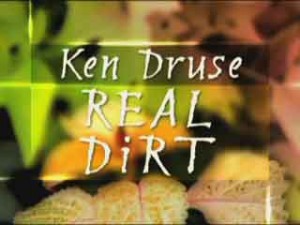 So, when I’m not gardening, I can often be found writing about gardening or talking about gardening. Apparently unaware of just how much I can talk about gardening, “gardening superstar” Ken Druse foolishly invited me to chat with him on his podcast and public radio program Real Dirt. But it’s actually my second time as his guest, which means he had no excuse!
So, when I’m not gardening, I can often be found writing about gardening or talking about gardening. Apparently unaware of just how much I can talk about gardening, “gardening superstar” Ken Druse foolishly invited me to chat with him on his podcast and public radio program Real Dirt. But it’s actually my second time as his guest, which means he had no excuse!
To hear our latest conversation at Ken’s website, click here; for the older podcast, click here and scroll down until you come to the May 7, 2010 episode.
In the new segment, we commiserate a bit about Ken’s frustration with garden media outlets (we will not name names) that are sometimes guilty of talking about plants as if they were furniture. Ken says that equating gardening with decorating the outdoors will just get you into trouble, and I agree. We also talk about favorite shade plants and how gardeners can make better choices by learning to value traits like resistance to disease and deer browsing more highly, instead of focusing solely on flowers. This is basically a matter of separating your wants from your needs with respect to garden plants, and training yourself to give adequate weight to the latter.
I’d been wanting to write a blog post on this subject, anyway, because of a recent experience that I thought illustrated the point pretty well. Not long ago, I had occasion to offer advice to someone seeking a replacement for an ash tree that had met its demise. She specified some challenging conditions the tree would have to tolerate, including clay soil that can get very dry in July and August; a hardiness zone (5B); a desired height at maturity (minimum 30 feet), and if possible, ornamental flowers and/or fruit. If it had ornamental flowers, she wanted it not to conflict with specimens of Rhododendron catawbiense (a late spring bloomer) planted nearby. She also wanted it to be fast growing yet not weak, which in my opinion was the most problematic of her requests because as a general rule those two traits are mutually exclusive (i.e., fast growing usually implies weak-wooded and short-lived), although some trees are worse than others in that regard.
So, given all these needs and wants, what would you do to find a suitable tree if you didn’t have a panel of experts to ask? The approach I recommended reminded me of the old adage about the difference between giving a hungry man a fish and teaching a hungry man how to fish (presumably after giving him a fish anyway so he was no longer hungry, but I digress…).
Rather than give her a list of suggestions, I told her how I would go about generating a viable list. (In my analogy, this would be teaching her how to fish.) First, I referred her to an excellent woody plant book (Dirr’s Hardy Trees and Shrubs by Michael A. Dirr) that I knew to contain lots of lists of trees by characteristic, including height, tolerance of heat and drought, etc. By cross-referencing lists for the most important of the traits she needed, she could come up with a short list, and then whittle it down further by considering lower priority traits.
By starting off with just height, tolerance of dry soil, and cold hardiness, she would have come up with a list of about a dozen trees. About half of those could then have been eliminated on the basis of their weak wood, tendency to become “weed trees,” or other undesirable characteristics. Candidates that remained included our native thornless honey locust (Gleditsia triacanthos var. inermis) and Indian bean tree (Catalpa speciosa or C. bignoniodes), as well as non-native European hornbeam (Carpinus betulus) and hedge maple (Acer campestre).
At that point, she would have had to do some additional research to settle on the one that was best for her. It would also have been advisable to research specific superior cultivars. As a last step, I’d call my local cooperative extension office or agricultural experiment station to discuss my final round draft picks, as well as to make sure none of my choices were on my state’s list of banned or invasive plants. (Click here to visit a website with links to invasive plant information by state.)
Interestingly, one tree that my approach didn’t generate (because it wasn’t on the height list in Dirr’s book that I would have expected) would also have been an excellent choice, in my opinion: tree-form shadblow (Amelanchier arborea or perhaps A. x grandiflora). I gushed about this beauty in my post Alight with White: Native Flowering Trees to Brighten Spring Days. While shadblow is usually thought of as wanting to grow at the woodland edge, I know from observation that wild, native shadblow in my area naturally grow in very punishing conditions on hot, dry, south-facing slopes. Whether nursery stock available at retail could be expected to perform like that is one of the things I’d discuss with the woody plant experts at cooperative extension. But regardless, it’s got a lot going for it: a moderate growth rate (resulting in a reasonably long age and reasonably strong wood), a very attractive form, subtly striated bark, delicate flowers that appear far earlier than those of Rhododendron catawbiense and would not cause a conflict, small fruits that birds eat and hence don’t cause a big mess, good fall color, and much more.
But even without that tree on the list, the process would have generated some good choices and functioned like a signpost pointing the gardener in the right direction. It would have formed the basis for a useful conversation with cooperative extension. Finally, it could have helped circumvent a problem gardeners don’t always anticipate: with some regularity, the woody plant you go to the nursery intending to buy isn’t available, or perhaps you just can’t find a good specimen. You want to have a second choice, and even a third, just in case your first choice can’t be found with ease. I am fond of saying that gardeners should almost always go to nurseries knowing in advance what they want to buy. This process helps you get to a place of confidence about your prospective garden addition, and also helps keep you from getting derailed if your number one choice doesn’t work out.
So, what I just described is basically the problem-solving process I go through every time I’m called on to choose plants. It can be applied to perennials with just a few modifications, taking into account that failure is much more likely with perennials than with woody plants, in part because perennials are much more prone to animal browsing. It really just boils down to recognizing that what you need is just as important as what you want, and trying to strike a satisfactory balance. If you try this method, let me know how it works for you!
The Shady Lady’s Guide to Northeast Shade Gardening: Photos of Plants for Special Situations
 Actaea sp. (baneberry) in flower
Actaea sp. (baneberry) in flower
 Actaea displaying white berries
Actaea displaying white berries
 Anemone canadensis (meadow anemone)
Anemone canadensis (meadow anemone)
 Anemonella thalictroides (syn. Thalictrum thalictroides; rue anemone)
Anemonella thalictroides (syn. Thalictrum thalictroides; rue anemone)
 Caulophyllum thalictroides (blue cohosh) showing foliage only; maidenhair fern is to the rear, and Pulmonaria rubra is at front
Caulophyllum thalictroides (blue cohosh) showing foliage only; maidenhair fern is to the rear, and Pulmonaria rubra is at front
 Cornus canadensis (syn. Chamaepericlymenum canadense; bunchberry). Full disclosure: this photo was taken in Alaska.
Cornus canadensis (syn. Chamaepericlymenum canadense; bunchberry). Full disclosure: this photo was taken in Alaska.
 Erythronium americanum (trout lily) growing with Pulmonaria seedlings
Erythronium americanum (trout lily) growing with Pulmonaria seedlings
 Gaultheria procumbens (wintergreen) displaying fall fruit.
Gaultheria procumbens (wintergreen) displaying fall fruit.
 Mitchella repens (partridgeberry) in fruit, intermingled with moss
Mitchella repens (partridgeberry) in fruit, intermingled with moss
 Podophyllum peltatum (mayapple)
Podophyllum peltatum (mayapple)
 Polypodium spp. (polypody fern)
Polypodium spp. (polypody fern)
 Rubus odoratus (purple-flowering raspberry)
Rubus odoratus (purple-flowering raspberry)
 Saxifraga stolonifera (strawberry begonia)
Saxifraga stolonifera (strawberry begonia)
 Senecio aureus (syn. Packera aurea; golden ragwort)
Senecio aureus (syn. Packera aurea; golden ragwort)
Tradescantia virginiana (spiderwort). Photo coming soon! Thanks for your patience.
 Zizia aptera (golden Alexanders)
Zizia aptera (golden Alexanders)
Plants Are Not Created Equal
March 12, 2014 by admin
Filed under Garden Design, Perennials, Regional Gardening, Shade Gardening
Over the coming months I’ll be basing a number of blog posts, including this one, on material from my forthcoming book, The Shady Lady’s Guide to Northeast Shade Gardening. The official publication date is May 6, 2014. You can learn more about the book here, here and here.
In my last blog post I talked about a process of elimination I think gardeners should use in order to choose perennial plants for their gardens and why I believe that process will result in the best choices. The rationale behind it can be boiled down to a few simple words: plants are not created equal—at least not from an ornamental gardening standpoint. Some are much better garden performers than others.
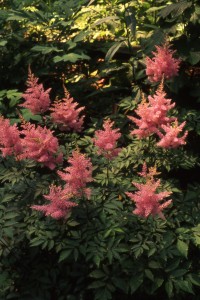
Astilbe is an excellent example of a backbone plant: it looks good all season and doesn't require tons of work.
It’s also important to realize that there’s no such thing as an ideal plant. You should no more expect perfection from a plant than a person, so you may have to give a little when it comes to your preferences.
Looking back at all the questions I said you should ask yourself when considering plants for your garden, I want to be clear that I’m not telling you there’s any plant for which all the answers will be what you want them to be. I’m just saying that for some plants a lot more of those questions have good answers, and those are the ones you should use to fill most of the space in your shade garden.
In fact, I have a name for these superior garden candidates: “backbone” plants. These are ornamentals whose exceptional qualities make them the best choices for filling the majority of the space in your garden. If you use them in abundance, they’ll hold your garden together and keep it solid, like a spine supports a body. Everything else, to one degree or another, is filler.
Strive to use backbone plants for at least 75-80% of your garden. Actually, you could build your garden from nothing but backbone plants, but for the sake of variety, you may allocate 15-20% of the space to secondary, filler plants that I refer to as “accent” plants. Finally, you can devote 5-10% of the space to a few annuals or tender perennials if you really feel the need to have them.
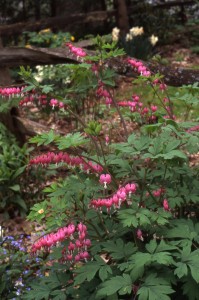
Old-fashioned bleeding heart is certainly a pretty face, but without staying power it doesn't qualify as a backbone plant.
So, what are some examples of backbone plants? I’ll give you two examples of backbone shade plants here, although this process of categorizing plants by their ability (or not) to deliver long-season performance applies equally well to sun as to shade.
The astilbe pictured above is a great example of a backbone shade perennial. It has strong, prominent flowers and attractive foliage, it’s not incredibly picky about growing conditions, it doesn’t require a lot of care, and it isn’t invasive. For those of us in the Northeast, its admirable cold hardiness is an essential quality, and the fact that deer generally ignore it is a godsend. Its only shortcoming is that it
really only flowers well in light shade at northern latitudes; in deep
shade, flowering will be minimal.
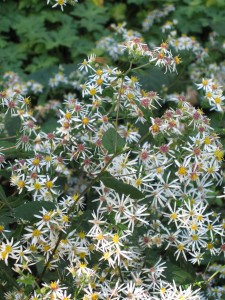
White wood aster is an underappreciated but very fine native backbone plant.
Plants like astilbe and white wood aster are reliable and unfussy—like friends who are easy to be with and always come through in a pinch. But you’ll notice that neither one gets “perfect marks.” As I pointed out earlier, it will almost never be the case that a plant perfectly suits all your needs and desires.
And they are not no-maintenance plants—there is no such thing in a garden setting. Each one has a rather predictable growth habit or behavior that will eventually demand your attention—astilbes often want division every few years, while white wood aster will migrate and have to be kept in bounds—but neither one will require an onerous amount of work. What they offer is a high likelihood of being successful additions to your garden, delivering steady results through the years while not making you regret ever planting them.
I know that this way of thinking about plants and plant selection may seem novel or even backwards to many readers. Gardeners are inundated with the message that gardening is all about personalizing your space and expressing your taste, not to mention the message that it should be cheap and easy, to boot (it generally isn’t, but that’s a topic for another blog post). While it’s certainly true that your garden should reflect your individuality, focusing too much on that obscures some inconvenient facts. Successful gardening means finding a manageable way to get good results given your budget of time and money, and for most homeowners that means putting functionality first.
I hope I’ve persuaded you of the value of using my approach. If you need a little more convincing, consider this: in the early years of my ornamental gardening experimentation, I bought a lot of plants I liked a lot and proceeded to…kill them. Mostly—because I was trying to determine the limits of their shade tolerance—I subjected them to inadequate light, and of course, a lot of them expired.
I feel kind of guilty about it now, but all that “horticide” did have a point: those sacrificial plants eventually taught me to categorize a wide range of shade perennials by both their needs and their performance potential for gardeners. In the process, I came to appreciate a whole new palette of plants for their ability to tough out the difficult conditions we Northeast shade gardeners face.
In my upcoming book, The Shady Lady’s Guide to Northeast Shade Gardening, I elaborate on the topic of what makes a superior shade garden perennial and how to use a wide range of shade plants to good effect. I hope that knowledge will help you find the best choices for your particular situation.


